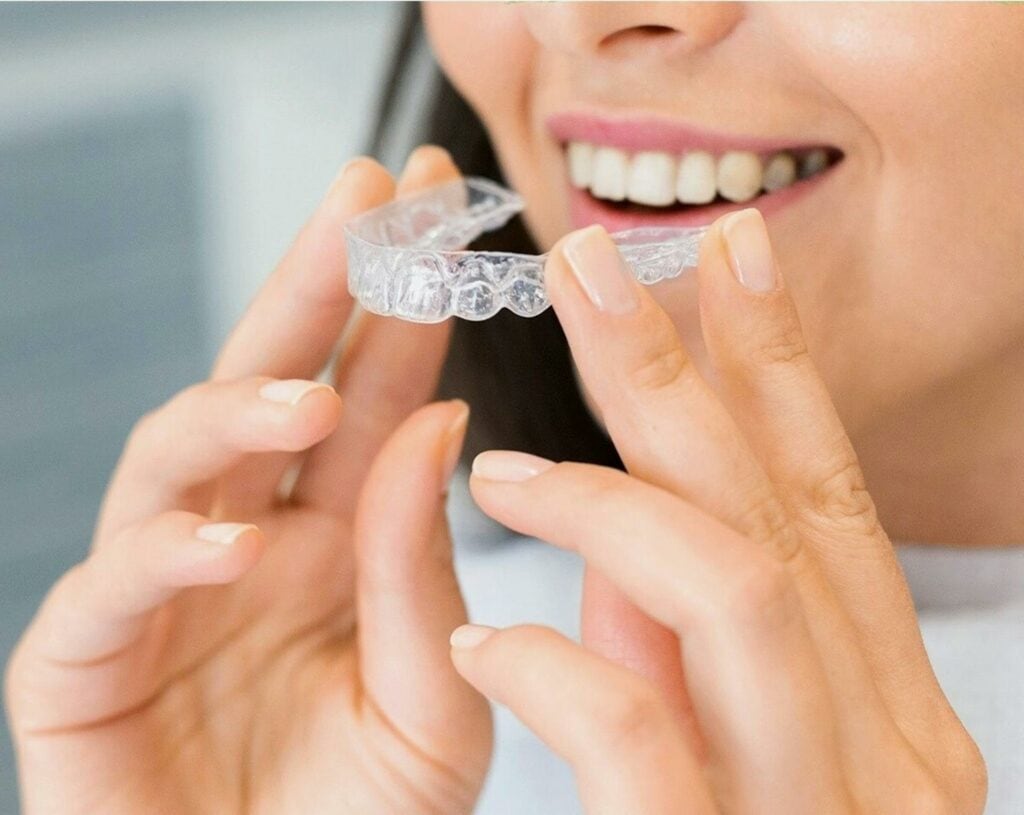Can You Wear Invisalign Only At Night?
Invisalign has become a modern alternative to braces, offering a clear and comfortable way to straighten teeth without wires or brackets. Many patients are curious to know, can you wear Invisalign only at night and get the same results, since the idea of limiting aligner use to sleeping hours may sound more convenient.
While the idea sounds appealing, most orthodontists stress that aligners should be worn consistently for the best results. Wearing aligners less than recommended slows progress, and teeth may relapse without constant, gentle pressure, driving up the cost of your Invisalign treatment.

How Invisalign Works
Invisalign aligners are custom-made trays designed to guide your teeth into their ideal positions. They work by applying constant, gentle pressure that gradually shifts your teeth over time. To keep treatment on schedule, aligners are typically swapped every one to two weeks, with each new set moving your teeth slightly closer to the desired alignment.
Why Consistent Wear Matters
For Invisalign to be effective, consistent wear is essential. Teeth only shift when steady pressure is applied, which is why orthodontists recommend keeping the aligners in place for the vast majority of the day. If aligners are worn less, progress stalls, and teeth can begin to relapse into their old positions. Compliance ensures smoother results and avoids unnecessary delays in treatment.
The Myth of Wearing Invisalign Only at Night
Limited Effectiveness
Wearing Invisalign only at night may seem convenient, but aligners need consistent pressure to move teeth effectively. With significantly reduced wear time, the trays cannot maintain enough force to guide proper alignment. During the day, teeth naturally begin to relapse, slowing or even reversing progress.
Longer Treatment Times
By reducing wear time, patients significantly slow down the effectiveness of aligners. What might have been a shorter treatment can end up taking much longer than originally planned. Inconsistent use not only lengthens the process but may also make it harder to achieve the planned results.
Increased Discomfort & Oral Health Risks
Night-only wear can cause greater discomfort at bedtime, as aligners feel tighter after hours without use. Beyond discomfort, there are also oral health concerns to consider. At night, your mouth naturally produces less saliva, which means there’s less protection against bacteria and acids.
When aligners are worn only during this time, they can trap bacteria close to the teeth and gums. Without the daytime rinse effect of saliva, this buildup may increase the risk of cavities, gum problems, and enamel damage.

What Experts Recommend
Most orthodontists agree that Invisalign aligners should be worn 20 to 22 hours a day to ensure steady and predictable results. Aligners should only be removed for meals, drinks other than water, and routine oral hygiene. This consistent schedule allows the trays to apply gentle but continuous pressure, keeping treatment on track.
Some special Invisalign aligners for teens even include compliance indicators that change color if not worn properly.
Getting Fast Results
To achieve the best outcome, wear aligners as directed, attend scheduled check-ups, and maintain good hygiene. Even your first day with Invisalign is critical, setting the tone for compliance and long-term success throughout your orthodontic journey.
Costs & Benefits to Consider
The cost of Invisalign treatment can vary widely depending on case complexity, treatment length, and location. One important factor to remember is that noncompliance, such as not wearing aligners as directed, can significantly extend treatment time and lead to higher costs overall.
For families, it’s essential to weigh the costs & benefits of Invisalign for teens, including convenience and confidence versus financial investment. In many cases, patients will also need follow-up retainers to preserve results and prevent relapse. When worn as recommended, Invisalign offers long-term value by improving oral health and creating a straighter, more confident smile.
Invisalign in Longmont & Northern Colorado
Many local patients are curious about Invisalign treatment in Longmont, especially when comparing it to traditional options. Orthodontists emphasize that consistent wear is the key to achieving predictable results. Each patient’s needs are unique, so it’s important to share your personal goals and concerns during consultation to ensure that Invisalign will work for you.
Remember, Invisalign is a tailored form of orthodontic treatment, not a one-size-fits-all solution, making professional guidance essential for a straighter, healthier, and more confident smile.
FAQs About Wearing Invisalign
Do you have to wear Invisalign all day?
Yes, most orthodontists recommend 20 to 22 hours daily for best results.
Can you wear Invisalign only at night?
This approach is not advised; while it may sound convenient, wearing aligners only at night greatly slows progress, increases the risk of relapse, and makes it harder to achieve your desired results on schedule.
What happens if I’m only wearing Invisalign 12 hours a day?
Treatment may be delayed, less effective, or require additional time and adjustments, ultimately increasing both costs and discomfort.
How long do you wear Invisalign overall?
Most Invisalign treatments fall within 12 to 18 months, though some cases can be as short as 10 months or extend up to 24 months, depending on factors like case complexity, age, and patient compliance.
Are there alternatives to Invisalign?
Yes, traditional braces or hybrid orthodontic treatments may be suggested based on your needs.